
Finding New Spaces Together
‘Vádye Eshgh (The Valley of Love)’ is a collaboration between Second Generation Collective and Abdul-Rahman Abdullah weaving through themes of beauty, diversity and the rebuilding of identity.
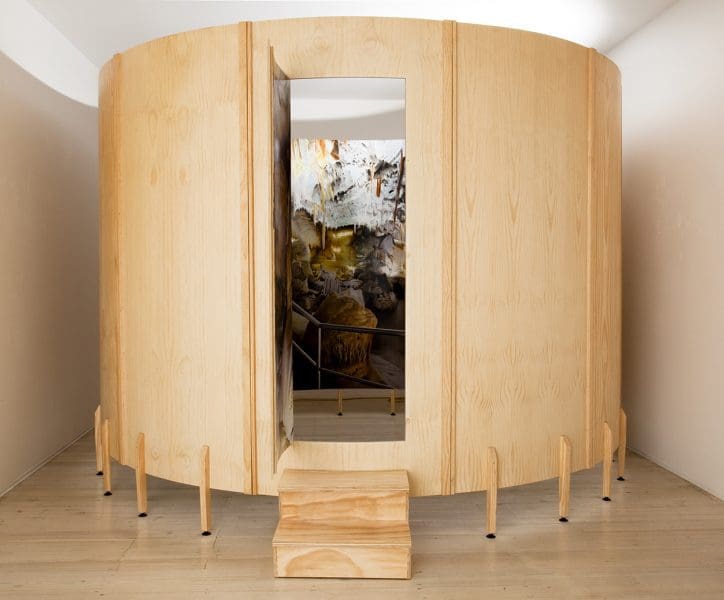

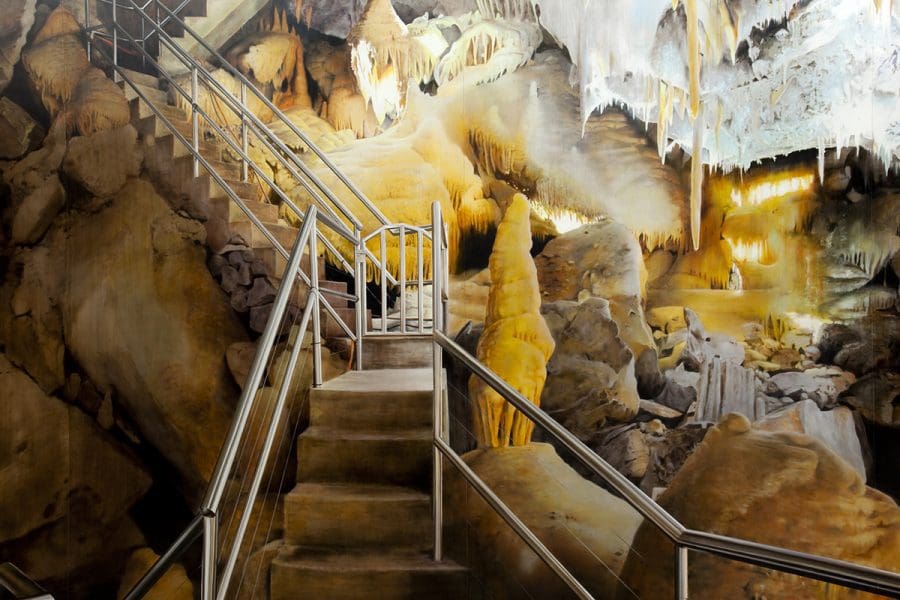
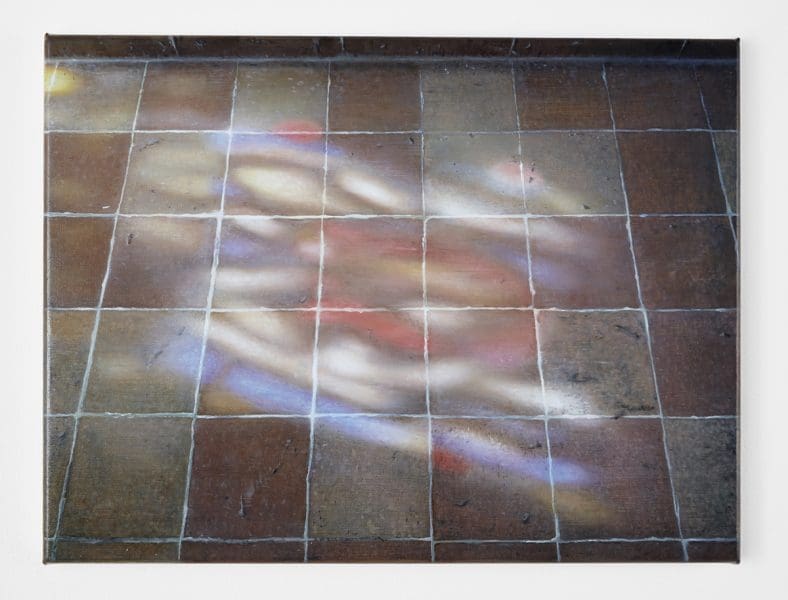
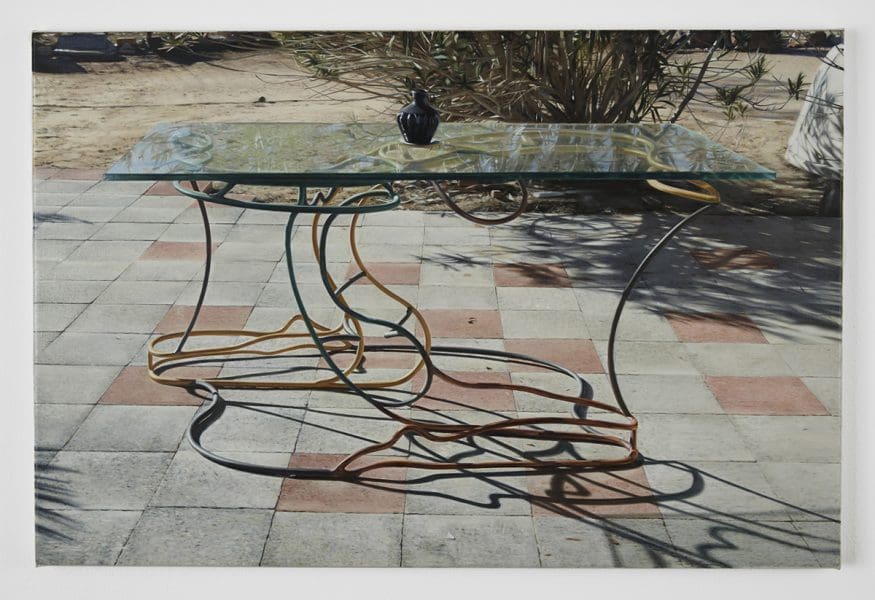

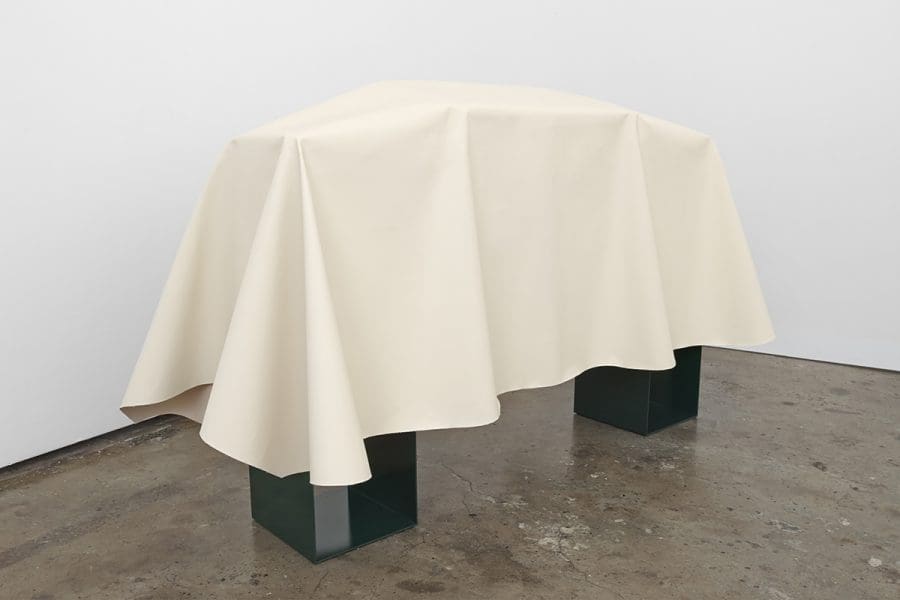
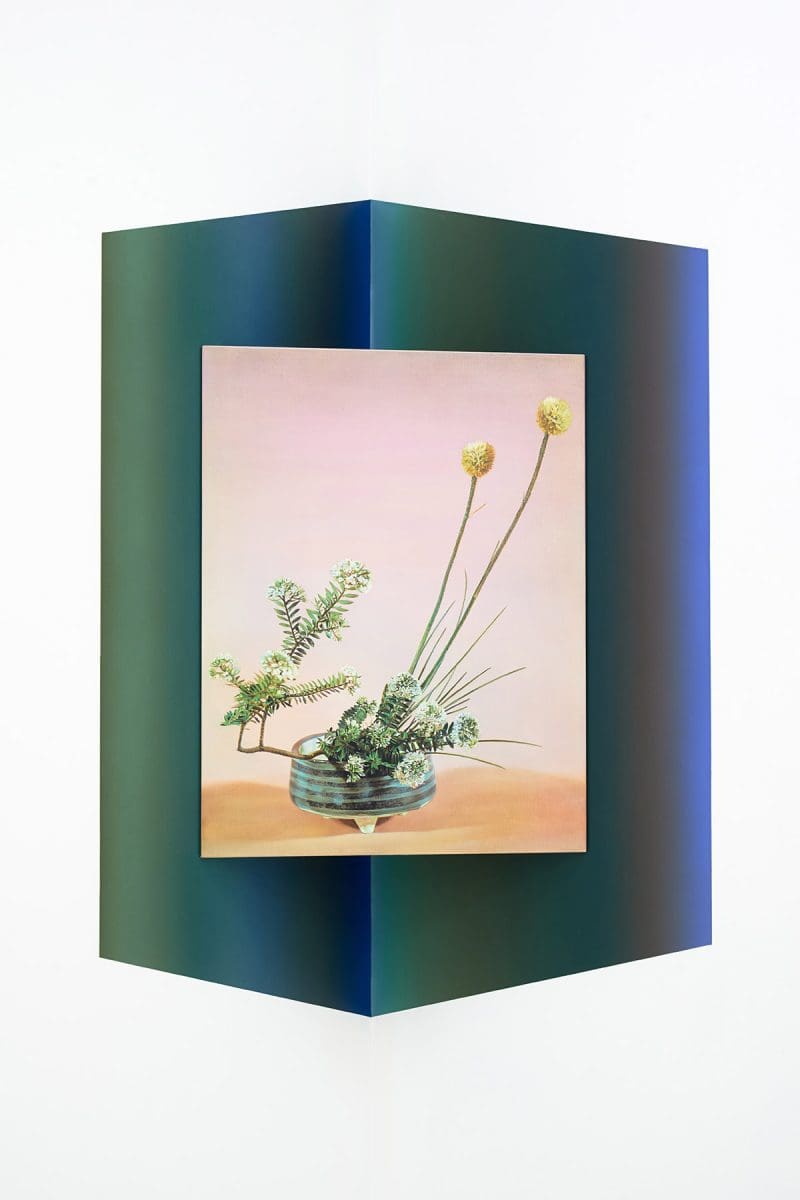
Born in 1983 in Sydney, and now residing in Brooklyn, NYC, Anna Kristensen is most recognised as a painter. However, it is at the crossroad of photography, sculpture and painting that her work tends to sit. In her use of media she engages in mimicry – glass takes on the quality of metal, canvas is transformed into the appearance of brick and copper. These objects, Kristensen says, “give up their form to join other forms, a kind of camouflage in a sense.” The images she is drawn to paint are taken from photographs shot on long walks, and are less vistas than they are scenes or objects of formal and conceptual interest – an outdoor table of an Airbnb property, a cyclone fence in New York’s Chelsea, stained glass light falling on terracotta tiles, tinged with melancholy and familiarity.
Varia Karipoff—What were your interests as a child?
Anna Kristensen—The usual interests, often craft-based things like making paper, painting ceramics and lino prints. I always liked having a project. Perhaps presaging my later interests of shiny, lush surfaces, as a baby I would carry a plastic gem-like bead around with me. Somehow I didn’t choke on it.
VK—Was there a moment where you came to the decision to pursue a career in art? What would have a plan B looked like?
AK—The most natural thing to do after high school was to go to art school. I don’t feel I’ve had much choice, it’s just something I need to be doing, noodling away in the studio. Plan B I guess might have been architecture related? I’ve always been interested in built spaces and this has informed a lot of my work. My father was a modernist architect so I think something has come from him.
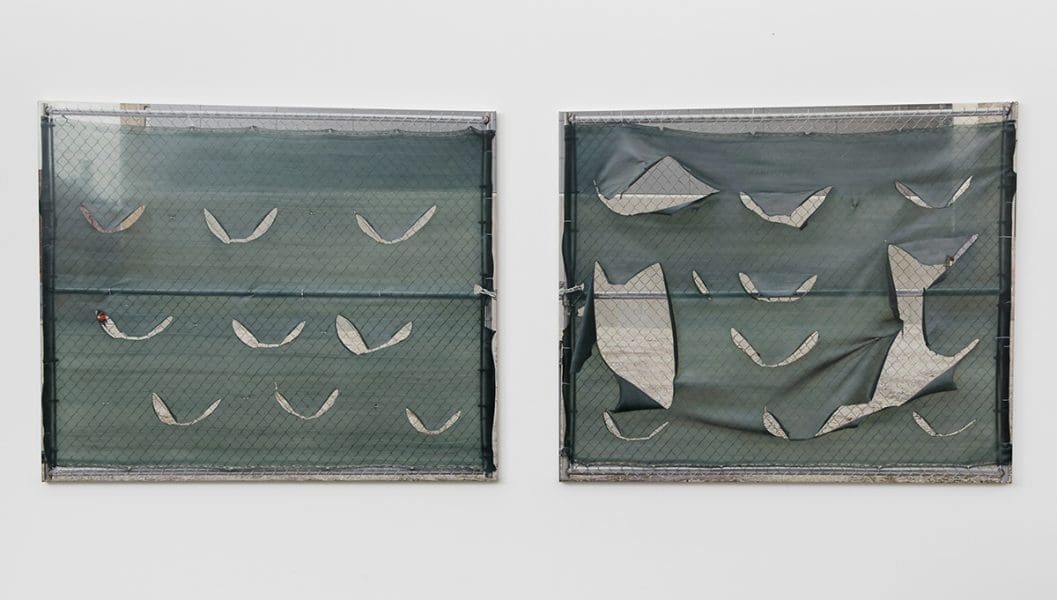
VK—What was the most important lesson you took away from art school?
AK—Colour theory and colour mixing, with Andrew Christophedes. I began to be able to analyse and dissect the world in terms of colour and tone. It opened up a new way of seeing, a keen observation of light and objects and the world. This was not exclusive to painting but how I would see generally.
VK—There’s such a density of articulated meaning to your work. How would you describe the core concerns of your practice?
AK—Yes, it’s complex! I’m interested in creating a network between works in an exhibition, constructing formal and conceptual relations between paintings and sculptures. The works reference each other (or sometimes themselves) and usually reach out to broader art historical contexts. When doing so I’m interested in ways of reframing that might be paradoxical or dialectical – I guess deliberately complicating things. An example might be reference to modernist or Renaissance ideas about the grid – the grid in the former as a means of flattening, bringing attention to surface, as anti-mimetic, anti-representation and in the latter, a means to construct the illusion of space through perspective, dissolve surface (the grid as window).
What’s interesting is the overall sense of removal felt when viewing my work; it uses artifice, mimicry and reproduction to uncanny effect. It might be through mediating processes, like photorealist painting (involving the copying of photography, itself a copy of reality). Brushmarks are smoothed out but gestures are quoted in the subject matter or pictured through a screen print. Or materials I use might simulate another. The works are not strictly copies but rather variations of a thing – the painting is never the same as the photo for example – and it’s that difference that invites moments of pause, analysis and reflection. Interestingly, this experience of the viewer is like one I have when conceiving and producing the work. In a way it’s about slowing down, observation, sensorial awareness and presence as we experience the world, a coping mechanism in these politically dark times.
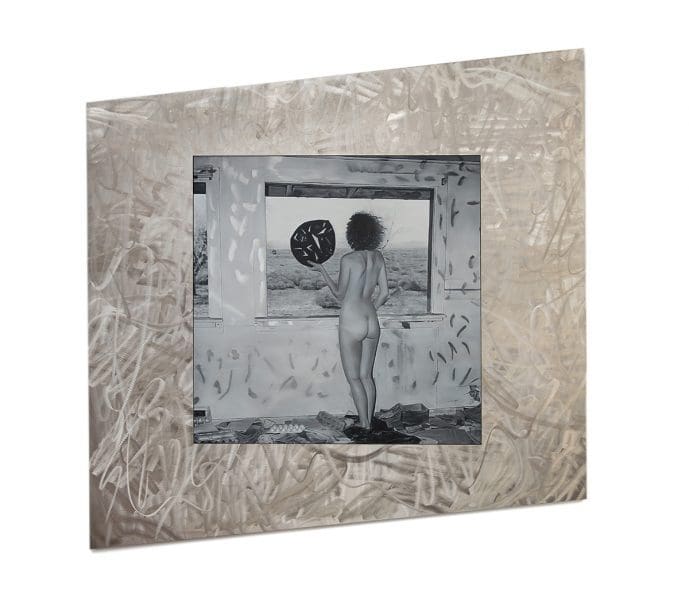
VK—Can you describe how you work?
AK—I collect a lot of my subject matter through walking and photographing, then mull over possible configurations of images and motifs for months. There is great economy in the selection process. The process of painting is labour intensive and slow – a production of an image completely at odds with how pictures are now broadcast and received, and an art production method that seems rebellious post-Duchamp, where outsourcing production and deskilling is the norm, if the artwork even needs to be made at all. A lot happens in the time it takes to make a painting, with different phases of seeing and understanding an image. I’m interested in the paradox of executing through slow artisanal production a subject matter indicative of post-industrial society and an increasingly immaterial economy – an Airbnb outdoor table for example. It’s something I’d like to explore further.
VK—You undertook two residencies in the US several years ago, one was in Omaha, Nebraska. What new ideas or techniques were you exposed to? What surprised you about the States?
AK—The residency at the Bemis Center for Contemporary Art in Omaha was a turning point in my practice. I was lucky to be there with such a wonderful group of artists and staff. I loved Omaha, the Midwest was so exotic to me, but eye-opening in terms of racial and social divide. This residency was followed by three months in New York at the Australia Council Greene St Studio. Both were a rich time for researching artists (Richard Artschwager, John McCracken, Donald Judd, Christopher Wool, Wade Guyton, R.H. Quaytman in particular) and experiment- ing. For example, I began to make screen printed paintings, involve abstract and minimal language in my work, and think more critically in terms of installation and architecture. It diver- sified my work beyond conventional approaches to painting.
VK—What are the key tenets of what you teach as a sessional lecturer?
AK—I think trialling ideas through making and experimenting is vital. Curiosity and play, seeing an idea through to the end without being caught up in a vision of outcome is important and brings unexpected or unimagined directions that are invaluable. Go through repeated cycles of expanding your ideas and experiments and then refining, expand back out and refine again…
VK—Can you let us in on what work you are creating for Sydney Contemporary?
AK—I’m making three photoreal paintings, one of a pink, cylindrical roller door housing on a receding brick wall (Pivot), another of a flower pot/urn-type thing on the stoop of a Brooklyn brownstone (Dip), and another (Wave) of a procession of marble gravestones, wavy shapes and reflective surfaces, from a photo of a wholesale gravestone place I found when I was walking around Omaha. All three paintings are of manufactured objects and are very still, but the titles infer actions and the forms allude to the body. Despite being highly representational and detailed, their subject matter can be seen in terms of reduced, simple forms and shapes.
VK—What is something you have read or watched lately that left a deep impression on you?
AK—Andrei Tarkovsky’s Stalker (1979). Incredible! Among many reasons why I loved this film I am fascinated by the surfaces and textures in the sets.